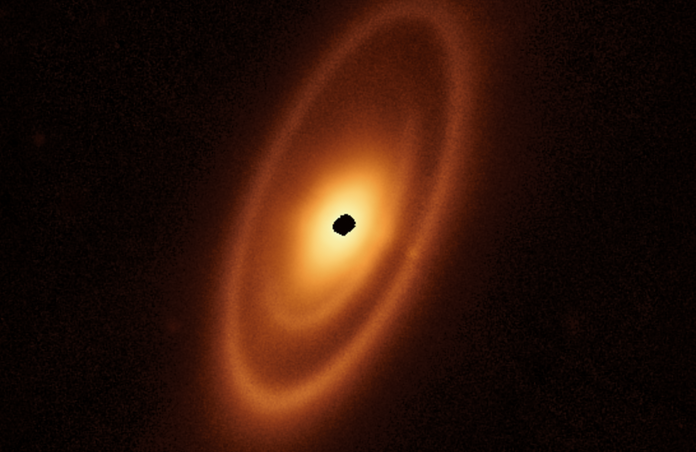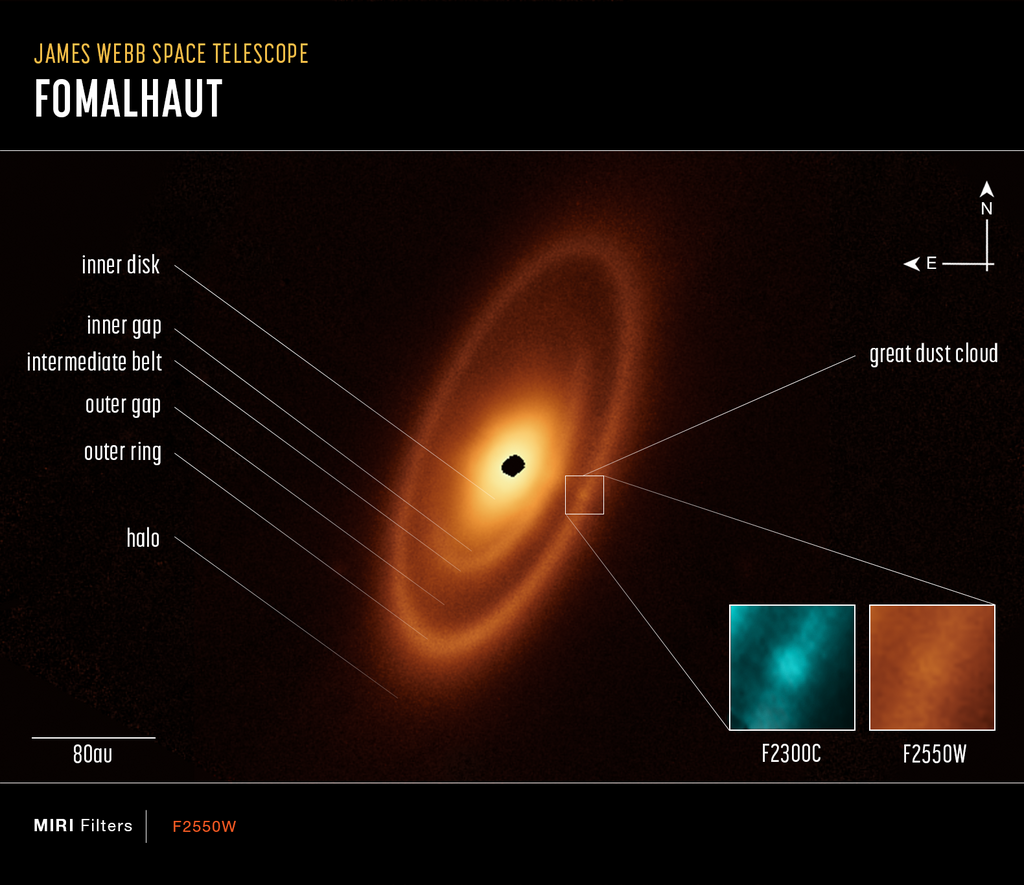Webb uncovers a new layer in Fomalhaut's belt system

A young hot star by the name of Fomalhaut has been observed to have a more complex ring structure of debris than originally thought. The warm dust around the star consists of three nested belts, spanning 14 billion miles from the star, which is 150 times the distance between the Earth and the Sun. Although the outermost belt has been previously observed by the likings of the Hubble and ALMA telescopes, the existence of the inner belts has been revealed for the first time by Webb.
The Fomalhaut star system consists of three stars: Fomalhaut A, Fomalhaut B, and Fomalhaut C. The first of the three is the star of interest, a bright star at the young age of 440 billion years old, just one-tenth of the solar systems age. Fomalhaut A is the 18th brightest star in the night sky and can be seen with the naked eye situated in the constellation Picis Austrinus which is located 25 light years away. The star is twice as massive as the sun, and 20 times brighter, surrounded by a ring of dust and debris. "I would describe Fomalhaut as the archetype of debris disks found elsewhere in our galaxy because it has components similar to those we have in our own planetary system," said András Gáspár of the University of Arizona in Tucson and lead author of the study. "By looking at the patterns in these rings, we can actually start to make a little sketch of what a planetary system ought to look like—If we could actually take a deep enough picture to see the suspected planets."

The existence of the outermost debris belt was uncovered by observations taken using Hubble and the Atacama Large Millimetre/submillimetre Array (ALMA). This belt is twice the scale of the Kuiper belt in our solar system, a disk comprising small bodies and dust just beyond Neptune. However, no structures inside this were seen. Using Webb’s Mid-Infrared Instrument (MIRI), the team led by Gáspár studied images of the debris system. These observations displayed the outer ring, along with a new narrow intermediate belt, potentially shaped due to gravitational forces exerted by unseen planets. These observations point towards the existence of a planet in between the dusty belts. "Where Webb really excels is that we're able to physically resolve the thermal glow from dust in those inner regions. So, you can see inner belts that we could never see before," said Schuyler Wolff, another member of the team at the University of Arizona.
Such belts form due to collisions of larger bodies similar to asteroids and comets and are then carved out by the gravitational influence of nearby planets. In our solar system, Jupiter influences the asteroid belt, whereas the inner region of the Kuiper belt is shaped by Neptune. "The belts around Fomalhaut are kind of a mystery novel: Where are the planets?" said George Rieke, another team member and U.S. science lead for Webb's MIRI. "I think it's not a very big leap to say there's probably a really interesting planetary system around the star." Wolff added that the complex structure consisting of a second intermediate belt and broader asteroid belt was not expected. "That structure is very exciting because any time an astronomer sees a gap and rings in a disk, they say, 'There could be an embedded planet shaping the rings!'
In addition to the new belt, Webb imaged a “great dust cloud”, which may be evidence supporting a collision occurring in the outer ring between two protoplanets. A similar feature was observed in the outer ring by Hubble in 2008, suspected to be a planet. However, later observations in 2014 implied that this had vanished, suggesting that the newly discovered feature is an expanding cloud of dust particles released from the collision of two icy bodies.
Observations of the dust and debris are crucial to understanding the formation and evolution of exoplanetary systems, and a collaboration of the Hubble, ALMA and Webb telescopes hope to bring an overall view of the debris disks around several stars.
--
Journal source: András Gáspár, Schuyler Grace Wolff, George H. Rieke, Jarron M. Leisenring, Jane Morrison, Kate Y. L. Su, Kimberly Ward-Duong, Jonathan Aguilar, Marie Ygouf, Charles Beichman, Jorge Llop-Sayson, Geoffrey Bryden. Spatially resolved imaging of the inner Fomalhaut disk using JWST/MIRI. Nature Astronomy, 2023; DOI: 10.1038/s41550-023-01962-6
Cover image: NASA, ESA, CSA, A. Gáspár (University of Arizona). Image processing: A. Pagan (STScI)
